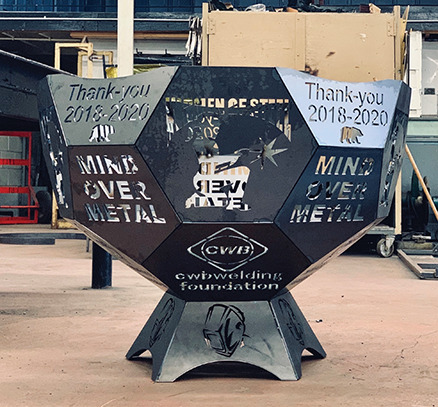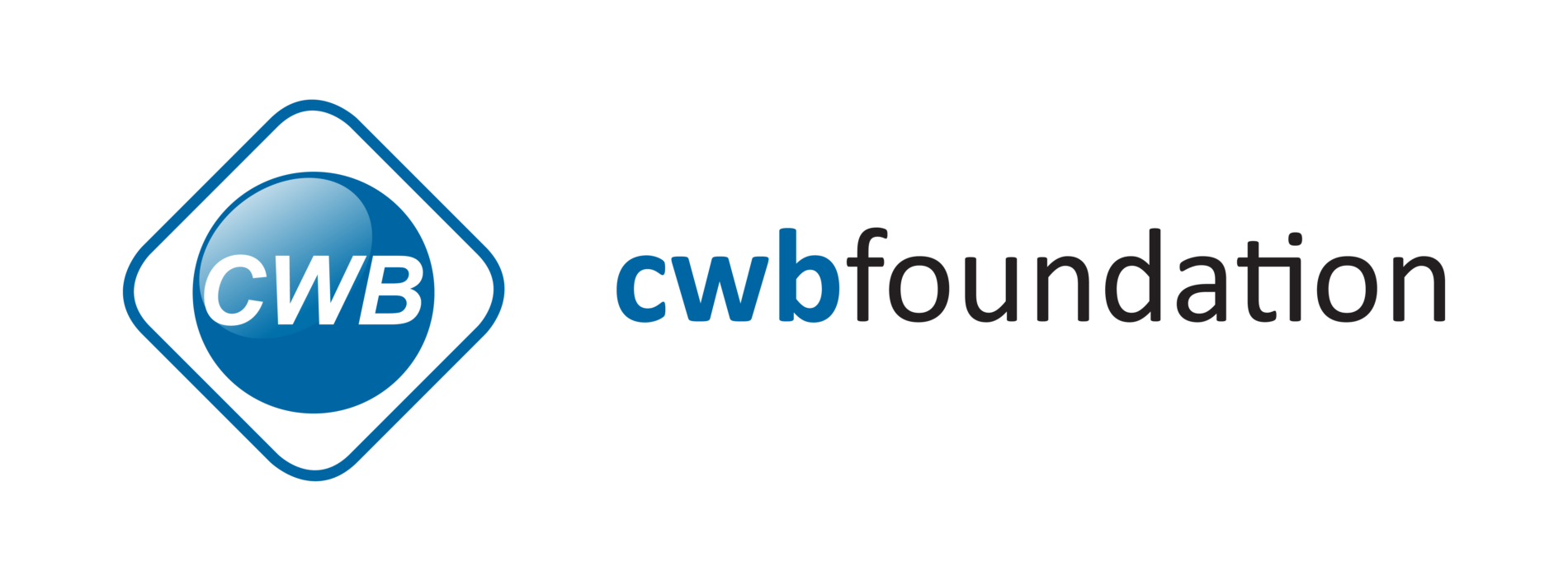
By Matthew Le Blanc
Aug 26, 2022
Megan Tubman
Welder and High School Instructor
19 Years of Service
Magnalum Metal and Steel – 2005 -2019
Instructor at Pontiac High School – 2018 – Present
Megan Tubman has always loved working with her hands as a farm girl. She grew up tinkering with equipment on her dad’s farm and would often find herself hovering around him to help with repairs. Her love for getting her hands dirty led her to become a welder and, after 17 years, eventually become an instructor teaching the same welding course at the same high school she graduated from. Circles don’t usually come any fuller than this.
Q: Tell us a bit about your career in welding?
A: I worked for a steel company called Magnalum for 17 years, and we focused on structural steel for hydro dams, pulp and paper mills, stuff like that. I’ve also done a lot of drafting and estimating during my career.
Q: How did you get started in welding?
A: I officially started during high school in 2003. I did the two-year course at Pontiac High school here in Quebec. In 2006, I came back for a year to get some college prerequisites while working at Magnalum in my hometown.
Since I was born and raised on a farm, I always watched my dad fix stuff up and knew there was a need for this type of work. I wasn’t big on sitting behind a desk at school, so I thought something hands-on and practical would be more up my alley. I tried it out and learned to love it. I love working with my hands, building stuff and using my mind to create art. So it just kind of grew on me.
Q: Is there a reason you chose welding over other skilled trades?
A: I think it was because we had a full-time program offered at Pontic High School from the start. I also saw it as my way to graduate since I didn’t want to take the traditional high school path. I wanted to take a more practical approach. My school taught welding, a technical drawing class I really liked, metallurgy, and other aspects like reading and creating blueprints.
Everything was integrated into welding, which helped us with the bigger picture. And what’s interesting is I’m currently an instructor at Pontiac High School, teaching a new generation of potential welders.
Q: Did your family encourage you the enter the skilled trades?
A: My dad was very practical like I am. He was a farmer, so he was a Jack-of-all. I did lots of handson work with him by fixing machinery, performing maintenance and stuff like that. Two of my uncles are welders too, so it’s in the family. Even though my dad wasn’t a welder, he taught me things. Once I began learning to weld in high school, I became the designated fixer on the farm for things that needed welding.
Q: Were you apprehensive about entering the trades as a woman?
A: Yes and no. My dad always kept me involved. We always worked together, so I never thought like that growing up. There were never any designated jobs considered “women’s work.” I’ve experienced that mentality during my career, but my upbringing helped me tackle anything that came my way.
I’ve had times as a floor manager where clientele would come in and repeatedly ask to speak with a man. I would direct them to someone who points them right back to me because I’m the one they need to talk with. I shrug it off and don’t lose any sleep over it. It’s water off a duck’s back. I think it’s a generational thing where they still see women a certain way because I don’t experience it as much with younger generations.
Q: Has it been difficult being a woman in the skilled trades?
A: I felt like I really had to prove myself starting out. I had to prove I could do the work through my work. Once they got to know me and what I could do, it was easier. For example, my husband is also a welder, and I think it’s funny that I’ll sometimes be asked to tackle a task instead of him because we do different types of work. He likes to fix machinery; he’s more of a heavy-duty welder. I’m more of a tinkerer and put finer finishes on my work. I enjoy working with miscellaneous steels and stuff like that to get those finer details. It’s a lot of art-related pieces. After people see what I can do, they specifically request for my skills.
Q: What are some art pieces that you’ve created?
A: I do a lot of memorial benches in the community. I really like doing steel roses, firepits and working with horseshoes. I like to do my own thing. I’ve worked on large projects like ferries, construction barges and stained glass artwork. I prefer the smaller, artsy projects.
Q: What are you favourite art pieces you’ve created?
A: The steel roses are pretty cool, and I love teaching my students that project. I have lots of female students, and it’s a project we can do together that’s a girl thing. Obviously, the guys aren’t too interested in doing that project, but we do lots. I also like using the CNC machine to design and cut pieces for firepits, benches and signs.
Q: Do you have a project you worked on that you’re really proud of?
A: I worked on the Quyon Ferry, which is about 15 minutes from the shop I used to work at. It took a couple years to complete, and it was a big project for our facility at the time. Once it was completed, it was seen as a local achievement in the community to get a cable ferry operational in the area. Being involved in something that directly impacted a local community was nice.
Q: What are your impressions of the CWB Welding Foundation?
A: I like how your organization works across the country to help schools with funding and hosting welding programs. We’re very dependent on grants and help to keep our course running. People are crying for more people to get into the trades, and your programs help address that issue. We need more kids to pick up a skilled trade, and even just being aware of the possibility creates a good foundation for a future career.
I got involved with the Foundation a few years ago through Pontiac High School. We recently applied to host a Women of Steel camp, and the Foundation helped us host one this past March. I was one of the instructors who taught at the camp, which was a first for me.
Another exciting thing is my students won the CWB Welding Foundation’s Forged By Youth award in 2021 for a large project I taught them. I had them draft the assembly drawings and cut lists to pull the project together. It was nice seeing everyone brainstorming and figuring out the process to complete the project. We were all very excited to learn that we won the award because they worked hard on it.
Q: Tell us about your experience being a part of a Women of Steel program.
A: I loved the whole thing, and it went smoothly. I’m used to teaching teenagers between 12 and 17 years old, but there were people my age in the program. It was interesting working with a different age group than I’m used to; it was a different atmosphere. I loved seeing their determination. They were out to prove themselves and learn something. There was a very good vibe on the shop floor.
I would like to host more of these programs, especially when there has been a lot of interest. Within the first 48 hours, we received 35 applications, and we ended up with 50 overall. The program only supports 12, so I could only take the first 12 who applied, which is a shame. This shows you how important and in-demand these skills are. People are clamouring for it.
The program seems to be in high demand amongst women in our rural community. They really want to learn to weld, maybe not as a full-blown career but to help fix things around the house or get closer to their husbands and boyfriends. It would be something they could do together. There’s also the arts and crafts aspect of it, and many women have picked up the torch to create some fantastic pieces.
Q: That’s interesting. Do you see that same trend in the classroom?
A: I have a fairly high percentage of female students in my classes. I would say about 20-25 per cent. I think they see a female instructor and feel more comfortable taking a course where they see themselves represented.
An interesting aspect of this is I get feedback from employers who’ve hired women who graduated from our school, and they gush over how they’re more attentive, clean and put a lot of effort into how they finish their work. There’s no rework with them because they want it to be perfect the first time. The boys are very good too, don’t get me wrong, but they’re not as particular about a job’s appearance.
Q: What do you think the industry and education system do better to support women getting into the trades?
A: The camps that the CWB Welding Foundation offers are incredible and something sorely needed. Most people work during the day, so it’s hard to find a window where everyone can get out of work to participate. We need more camps and to offer them on weekends and evenings, which is something many people ask for. We also have participants travelling over an hour to get here, so flexibility would increase interest considerably.
Having equipment available within schools and having teachers who can teach these courses properly is very important. Show students how to fabricate things and go beyond welding. I push a lot of fabrication in my classes because it helps round out their skills. If you can build it, you can weld it sort of mentality. The idea is to get students ready to enter the workforce and decrease the amount of training an employer has to invest in a new hire.
Q: What message would you send to kids showing interest in welding?
A: Learn things every day and practice. Explore. I always try to push myself to do things better with everything I do, and that’s how you learn. I’ve always said that if you think you know it all already, you will not have a long career. The day you know it all might be when you choose a new career path.
Q: What about young girls?
A: Anything anyone can do, you can do it too. It doesn’t matter if you’re male or female. You’re all more than capable. Everyone works together to accomplish the same things. Do what you love.
